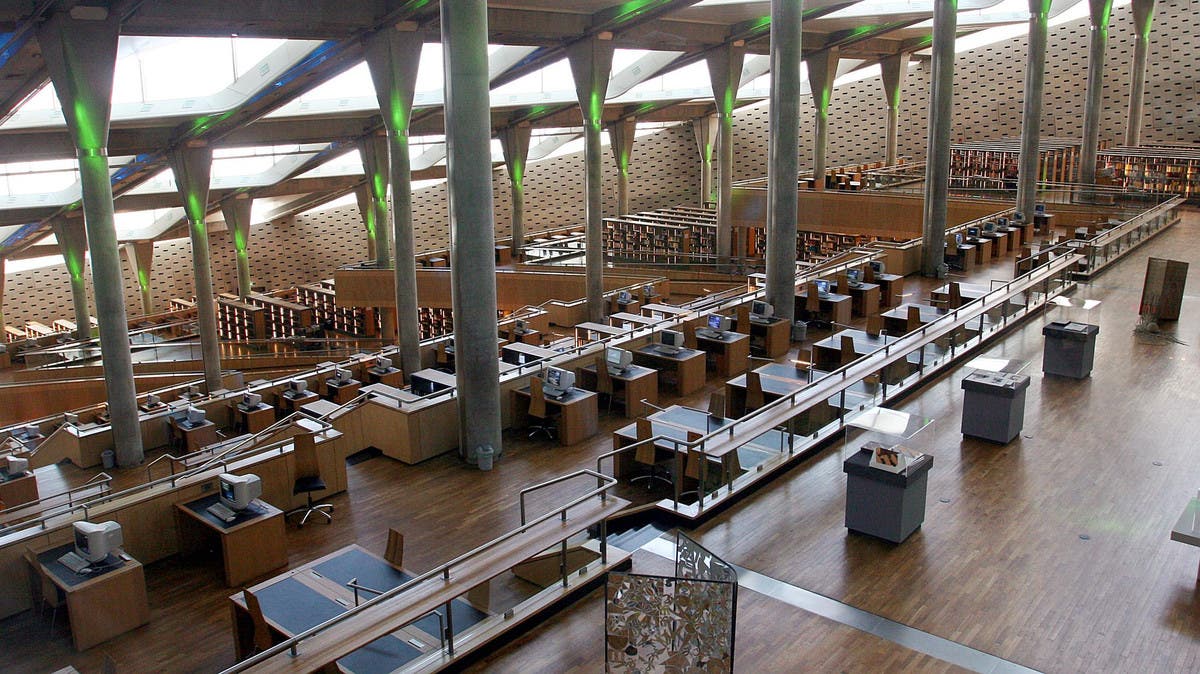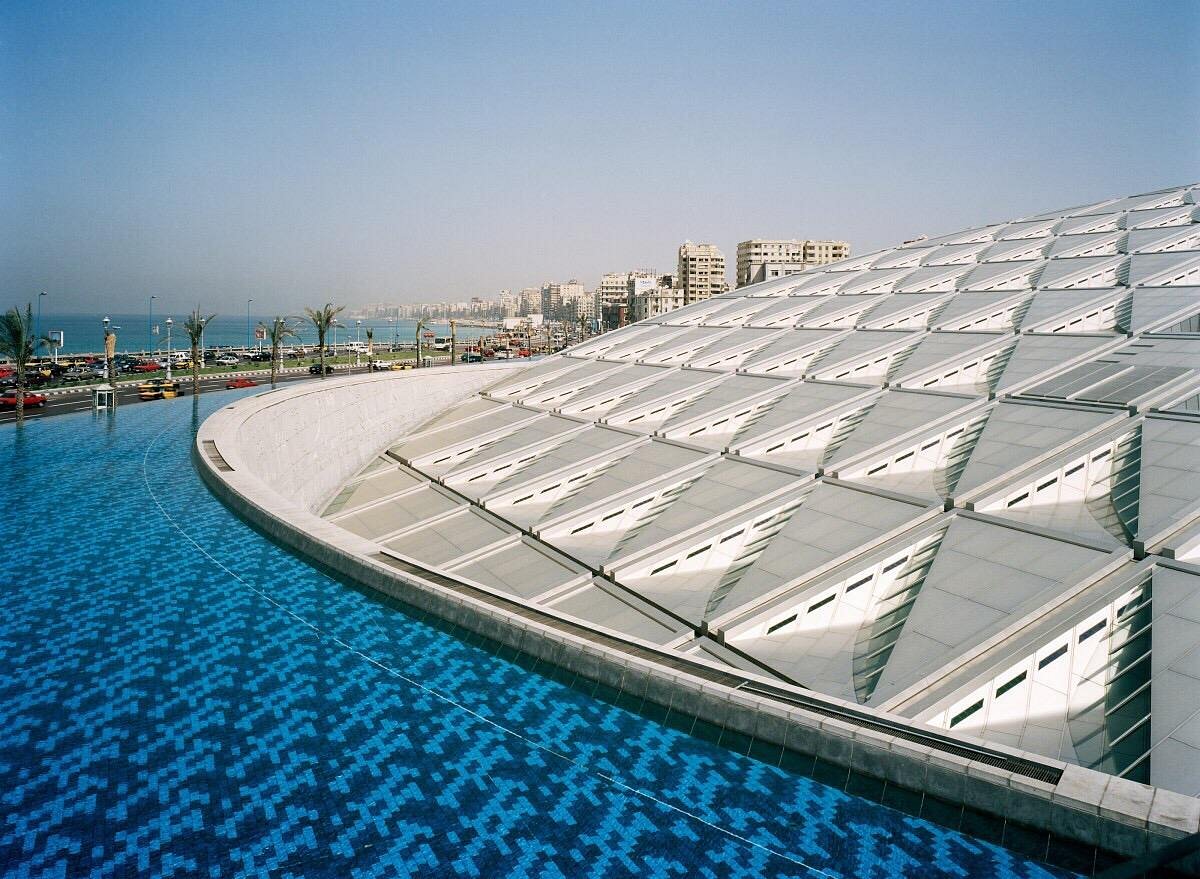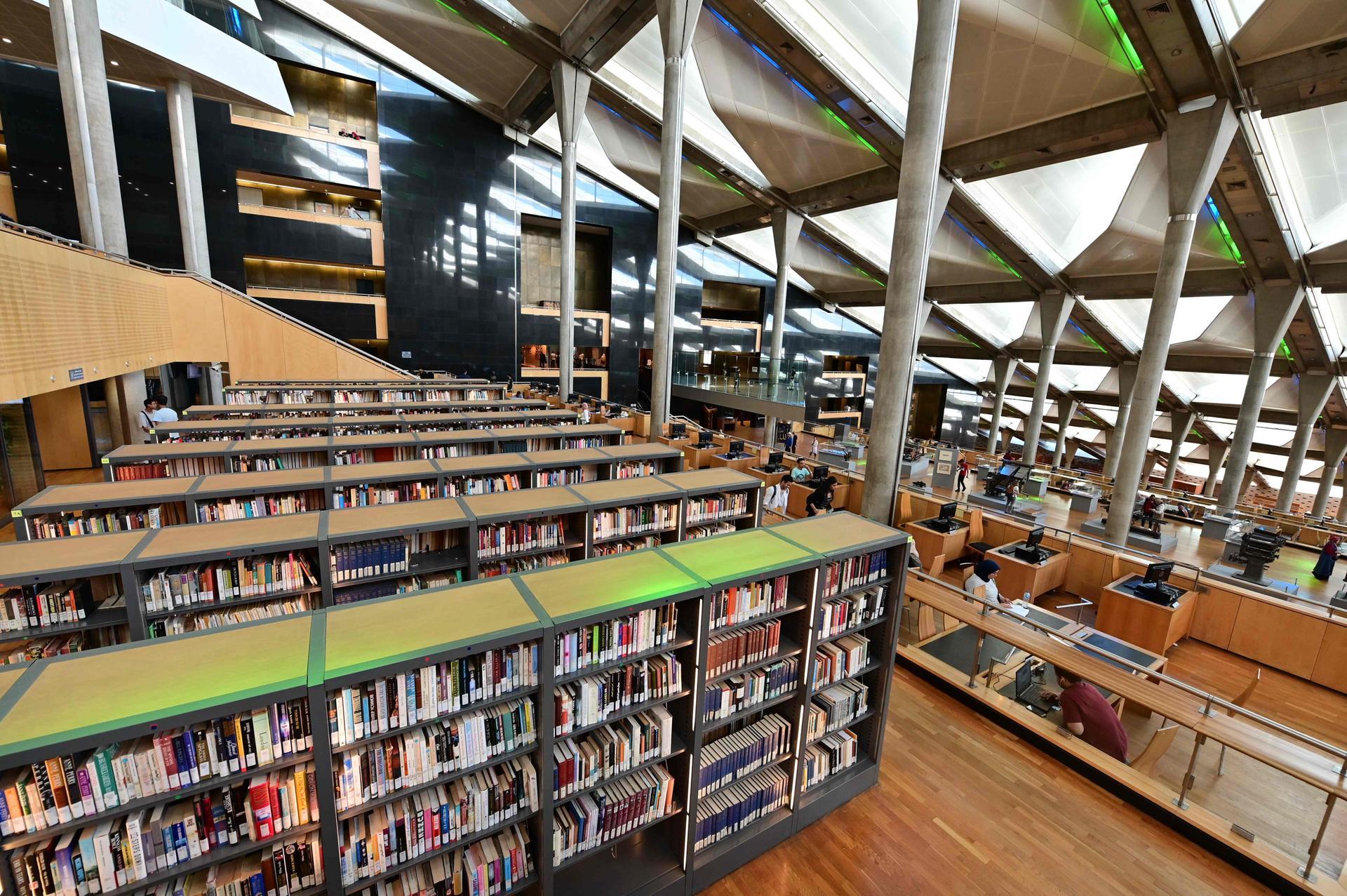A Journey to the Bibliotheca Alexandrina: The World's Greatest Library
The world is home to countless libraries, but few rival the sheer scale and beauty of the Bibliotheca Alexandrina in Egypt. Having been lost to time for centuries, this colossal structure was rebuilt in 2002 to serve as a beacon of knowledge and culture for all who visit. A pilgrimage to this great institution is a must-do for bookworms and history buffs. Join me on a journey to the Bibliotheca Alexandrina as we explore its treasures and glory together.

Introduction
Overview of the Bibliotheca Alexandrina
The Bibliotheca Alexandrina is not just an ordinary library; it is an inspiring place of knowledge that serves the minds and imaginations of Egypt's students. It is a major cultural centre and library located on the shore of the Mediterranean Sea in Alexandria, Egypt. The original library in Alexandria was once one of the largest libraries in the world until it was destroyed. However, the idea of reviving the old library dates back to 1974 when a committee selected a plot of land for its new library. Construction work began in 1995, and after an investment of around £220 million, the complex was officially inaugurated on 16th October 2002. The new library has shelf space for eight million books, with the main reading room covering an impressive 20,000 square metres. The library's architecture is equally remarkable, with its circular tilting form resembling the ancient Alexandrian lighthouse and its walls made of grey stone carved with inscriptions. The library also houses several specialised collections, including rare and special collections, and provides numerous learning and research opportunities. With its rich history and commitment to knowledge, the Bibliotheca Alexandrina has become a symbol of learning and culture in the region. She continues to impact the academic and cultural life of Egypt and beyond. [1][2]

Importance of visiting the library
The Bibliotheca Alexandrina, also known as the Alexandria Library, holds immense importance and is a must-visit destination for all knowledge-seekers and book lovers. This majestic library is a cultural centre and a symbol of intellectual excellence. The library serves as a rallying point for different cultures and intellectual minds, fostering a sense of unity and curiosity.
Built during the Ptolemaic dynasty, the original library in Alexandria flourished as a centre for education and research. However, it faced destruction and was eventually revived with the establishment of the modern Bibliotheca Alexandrina in 2002. The vision behind this reconstruction was to reestablish Alexandria as a great intellectual and cultural centre of the 21st century.
The architecture and design of the new library are breathtaking. The main reading room offers a stunning sea view with its 32-metre-high tilted panel. The library has shelf space for eight million books, making it the sixth-largest library in the world. It also houses specialised libraries for maps, multimedia, the blind and visually impaired, and children, providing diverse learning and research opportunities.
The significance of visiting the Bibliotheca Alexandrina lies in experiencing the rich history and legacy of the ancient library while exploring the vast collections of books and rare artefacts. It is not just a library but a hub of cultural exchange, hosting numerous events, exhibitions, and educational programmes. By immersing yourself in this intellectual haven, you can contribute to preserving knowledge and become part of a global community that values learning and understanding between cultures and peoples. [3][4]

Purpose of the blog post
This blog post aims to provide readers with an in-depth overview of the Bibliotheca Alexandrina, also known as the Library of Alexandria. By exploring its history, significance, and architectural design, readers will better understand why this library is considered one of the greatest in the world. This blog post aims to educate and engage readers, providing them with factual information and insights about the library's rare and special collections and the learning and research opportunities it offers. Whether you're a history enthusiast, a book lover, or simply curious about the world's greatest library, this blog post will take you on a journey through the fascinating world of the Bibliotheca Alexandrina. So, join us as we delve into this iconic institution's rich history and awe-inspiring architecture. [5][6]

History of the Bibliotheca Alexandrina
The original library in Alexandria
The original library in Alexandria holds a special place in history as the most famous library of Classical antiquity. It was part of a research institution, the Mouseion, dedicated to the nine goddesses of the arts.
Although the exact founding of the library is uncertain, it is believed to have been established during the reign of Ptolemy I, who sought to create a repository of all knowledge. The library quickly became a significant learning centre, attracting important scholars and housing a vast collection of scrolls. Estimates vary, but the library may have contained anywhere from 40,000 to 400,000 scrolls at its height. It was regarded as the capital of knowledge and learning, with influential scholars like Euclid and Eratosthenes working there.
Despite the popular belief that the library was burned down in one catastrophic event, it declined gradually over several centuries due to a lack of funding and support. The daughter library in the Serapeum may have survived, but it was vandalised and demolished in 391 AD.
The library's founding marked a significant milestone in preserving and disseminating knowledge, making it an intriguing subject to explore. [7][8]
Destruction and reconstruction of the library
The destruction and reconstruction of the Library of Alexandria is a topic shrouded in mystery and uncertainty. According to the myth, the library was intentionally burnt and destroyed. However, the reality is much more complex.
There are conflicting texts and a lack of archaeological evidence to determine what happened to the library. It is possible that the library gradually declined over several centuries due to various factors, such as the purging of intellectuals from Alexandria in 145 BC and the lack of funding and support during the Roman period. Julius Caesar's attack on the port of Alexandria is often blamed for the destruction, but there is little evidence to support this claim.
What is clear is that the original library no longer exists and can only be found in ancient texts. Despite its uncertain fate, the legacy of the Library of Alexandria continues to captivate our imaginations and remind us of the importance of preserving knowledge and learning.
The modern Bibliotheca Alexandrina, which opened in 2002, aims to carry on the spirit of the ancient library and provide a haven for intellectual exploration and research. [9][10]
Vision for the new library
The vision for the new Bibliotheca Alexandrina is both timeless and bold. With its circular tilting form, the building spans 160 meters in diameter and reaches up to 32 meters in height. It symbolises unity and continuity, embracing the past, present, and future. The library's design draws inspiration from the ancient Alexandrian harbour and lighthouse, evoking a sense of knowledge flowing through time.
The Library of Alexandria aims to revive the spirit of the ancient library, which was one of the largest in the world before its destruction. It is a contemporary design for students, researchers, and the public. The library not only houses an impressive collection of books but also includes cultural and educational facilities such as museums, a planetarium, and a school for information science.
The architecture and design of the new library are visually striking and unique. The exterior façade of hand-carved stone displays a collage of letters, symbols, and inscriptions from various writing systems throughout history. The interior features a vast open reading room, accommodating up to 4 million books. The innovative terraced design reduces book retrieval time and provides readers with maximum exposure to natural light.
Overall, the vision for the new Bibliotheca Alexandrina is to create a centre of excellence in producing and disseminating knowledge. It aims to be a place of dialogue, learning, and understanding between cultures and peoples. With its impressive architecture and vast collections, the library is a new symbol for learning and culture in Alexandria and beyond. [11][12]
Architecture and design of the new library
The architecture and design of the new Bibliotheca Alexandrina are truly awe-inspiring. With its circular tilting form and towering height, it stands as a symbol of learning and culture. The building spans an impressive 160 meters in diameter and reaches up to 32 meters in height while descending 12 meters into the ground. Surrounding the library is an open plaza and reflecting pool, creating a tranquil and inviting atmosphere.
The new library's design pays homage to the ancient Alexandrian lighthouse, with its glistening tilting roof. This not only adds a touch of historical significance but it also provides the city with a distinct new landmark. The circular form of the library represents the continuity of human existence, embracing the past, present, and future. It symbolises unity and the cyclical nature of knowledge, which has fluidly flowed through time.
The architectural competition held for the new library's design attracted entries from over 77 countries, with the practice Snøhetta emerging as the winner. This international collaboration allowed for a unique and recognizable expression that perfectly captured the essence of the project. The library's construction began in 1994 and was officially inaugurated in 2002 after investing approximately US$220 million.
The exterior facade of the Bibliotheca Alexandrina is a remarkable display of artistry. Made from hand-carved stone, it showcases around 4,000 unique characters and inscriptions from various writing systems, covering over 10,000 years of history. The fusion of these inscriptions with the physical makeup of the building, representing layers of history and nature, creates a harmonious blend of culture and architecture.
Overall, the new Bibliotheca Alexandrina's architecture and design serve as an exceptional library facility and represent a symbol of cultural revival and knowledge in the Mediterranean region. [13][14]

Collections and Services
Overview of the library's collections
The Bibliotheca Alexandrina, also known as the Library of Alexandria, is a major library and cultural centre in Alexandria, Egypt. It was officially inaugurated on 16 October 2002 and is considered one of the world's greatest libraries. The library's collections were donated from all over the world, including documents detailing the Spanish period of Moorish rule and records about the building of the Suez Canal donated by the French.
The library is situated on a magnificent site alongside Alexandria's ancient harbour in the city's historic centre. It boasts impressive dimensions, with shelf space for eight million books. The main reading room covers 20,000 square meters on eleven cascading levels. The library's architecture is equally breathtaking, with a 32-meter-high glass-panelled roof tilted out toward the sea like a sundial. The walls are made of grey Aswan granite and are carved with characters from 120 different human scripts.
The Bibliotheca Alexandrina also houses specialized libraries for maps, multimedia, the blind and visually impaired, young people, and children. It features four museums, four art galleries for temporary exhibitions, 15 permanent exhibitions, a planetarium, and a manuscript restoration laboratory. The library's mission is to be a centre of excellence in producing and disseminating knowledge and to serve as a place of dialogue, learning, and understanding between cultures and peoples.
Overall, the Bibliotheca Alexandrina stands as a testament to Alexandria's rich history and intellectual pursuit. It offers a wide range of learning and research opportunities, making it a must-visit destination for scholars, researchers, and anyone with a thirst for knowledge. [15][16]

Rare and special collections
Bibliotheca Alexandrina is known for its vast collection of books and has rare and special collections that make it stand out as a unique library. These collections are a treasure trove for enthusiasts and scholars, offering a glimpse into various aspects of history, culture, and literature.
One of the notable collections is the Taha Hussein Library for the Blind and Visually Impaired. Named after the renowned professor of Arabic and literary critic, this library provides materials in accessible formats for those with visual impairments. It offers a diverse range of books and journals, equipped with special software that enables readers to access and read them.
There is also the Nobel Section, which showcases the book collections of Laureates in Literature from 1901 to the present. This section was inaugurated by Nobel laureates Naguib Mahfouz and Orhan Pamuk, adding prestige to the library's collection.
The Manuscript Museum is another highlight, housing rare manuscripts and books. It boasts the world's largest collection of digital manuscripts and aims to preserve and promote the study of Arab and Islamic manuscript heritage. Visitors can explore various sections within the museum, such as the BA Unique Items, Microfilms, and Exhibition Galleries.
Other collections include the Sadat Museum, Antiquities Museum, History of Science Museum, and the Manuscripts Center. Each collection provides a unique perspective and contributes to the overall richness of the Bibliotheca Alexandrina.
With its diverse and extensive range of rare and special collections, the library offers a unique experience for visitors and researchers alike. It serves as a hub for knowledge and cultural exchange, allowing individuals to delve into the depths of history, culture, and literature. [17][18]

Learning and research opportunities
Learning and research opportunities at the Bibliotheca Alexandrina are abundant, making it a paradise for knowledge seekers. The library offers a wide range of resources and programs that cater to various interests and academic disciplines.
The library provides access to a vast collection of books, manuscripts, and documents worldwide for those interested in research. The Rare Books and Special Collections Library, particularly, houses valuable and unique materials that offer insights into various historical periods and cultures. Additionally, the Manuscripts Center offers a wealth of rare manuscripts and provides digital access to thousands of books, maps, and documents.
Learning opportunities are also plentiful at the Bibliotheca Alexandrina. The library hosts various events and programs, including book fairs, conferences, exhibitions, and lectures. These activities cover various topics and cater to different age groups, from adults to children to young people. The library also offers educational courses and workshops that promote learning and intellectual growth.
Moreover, the Bibliotheca Alexandrina is a hub for research and innovation. The International School of Information Science, affiliated with the library, is an incubator for digital and technological projects. It fosters innovation and promotes the development of activities and projects related to building a universal digital library.
The Bibliotheca Alexandrina provides a vibrant and stimulating environment for learning, research, and intellectual exchange. Whether you are a scholar, a student, or simply a lover of knowledge, visiting this remarkable library is an opportunity to expand your horizons and pursue knowledge. [19][20]
